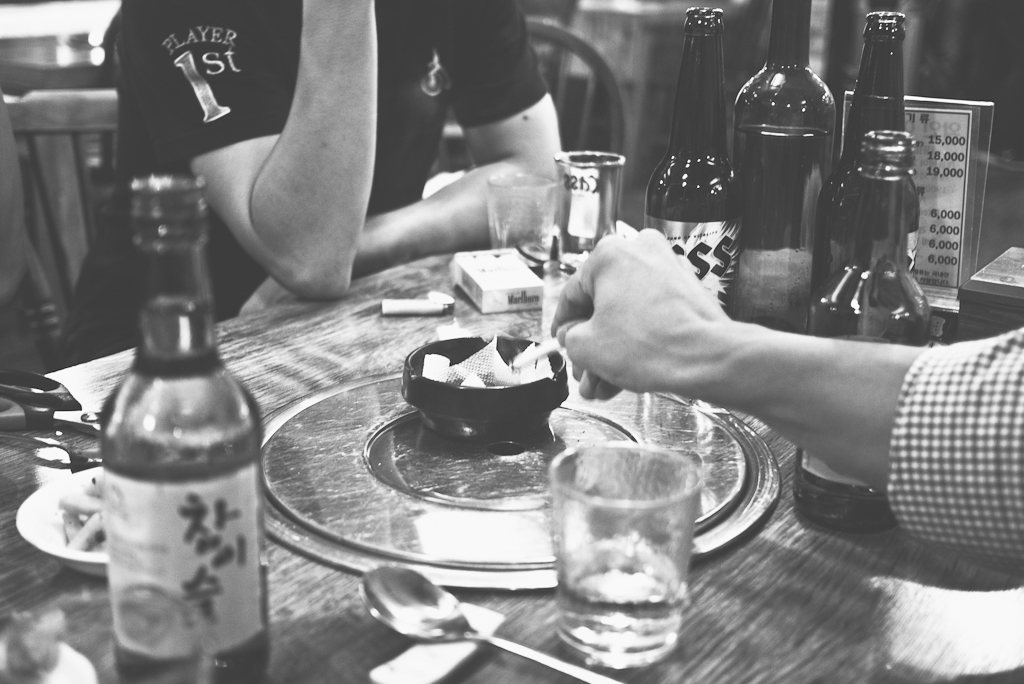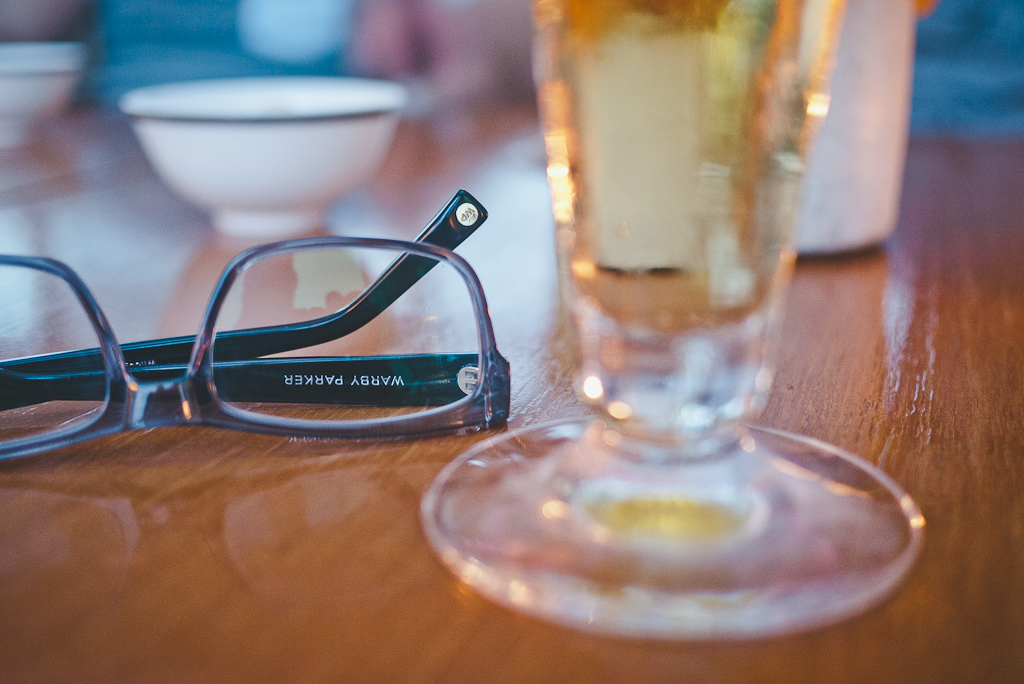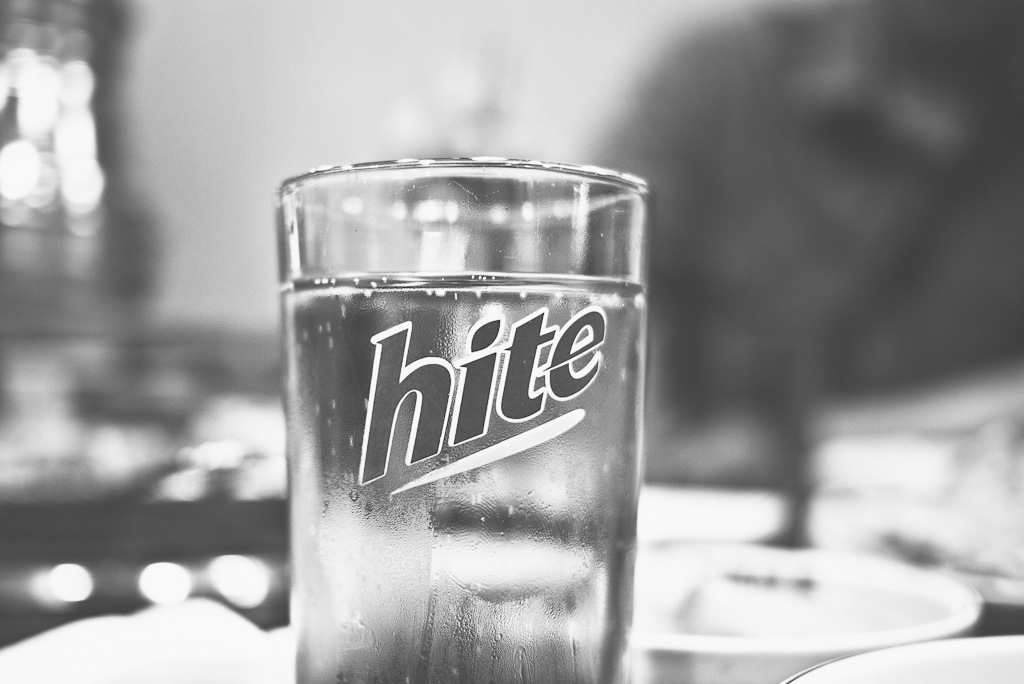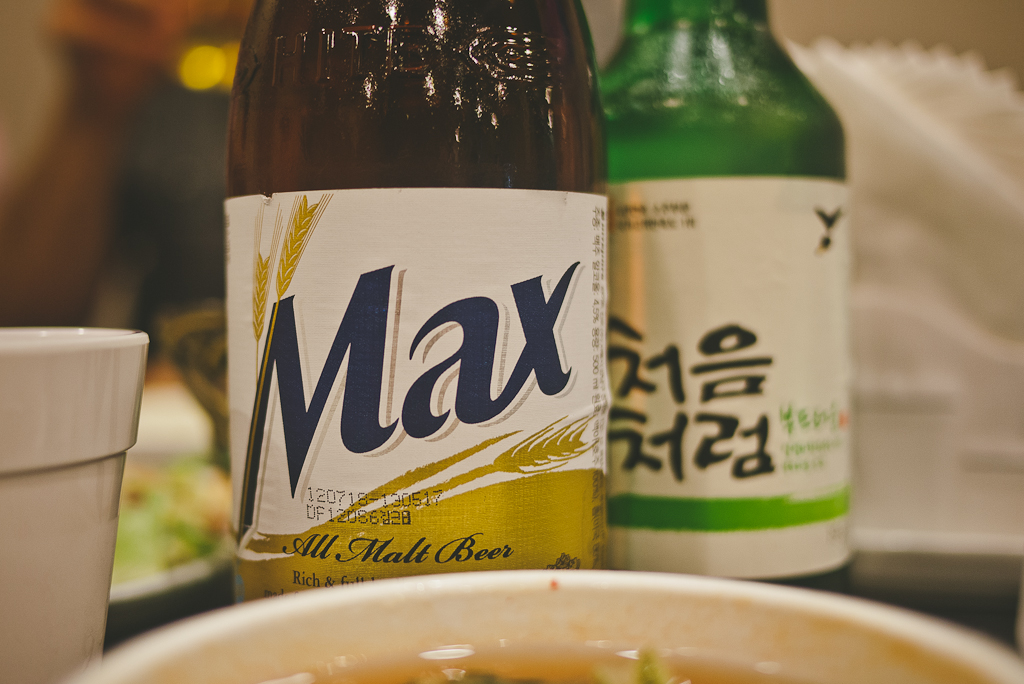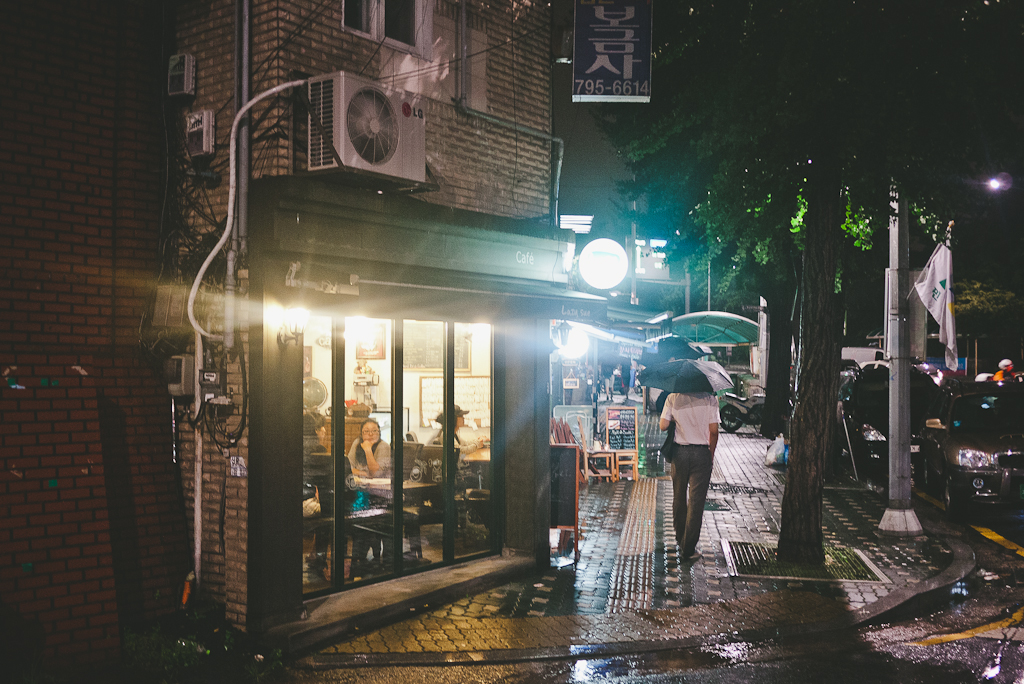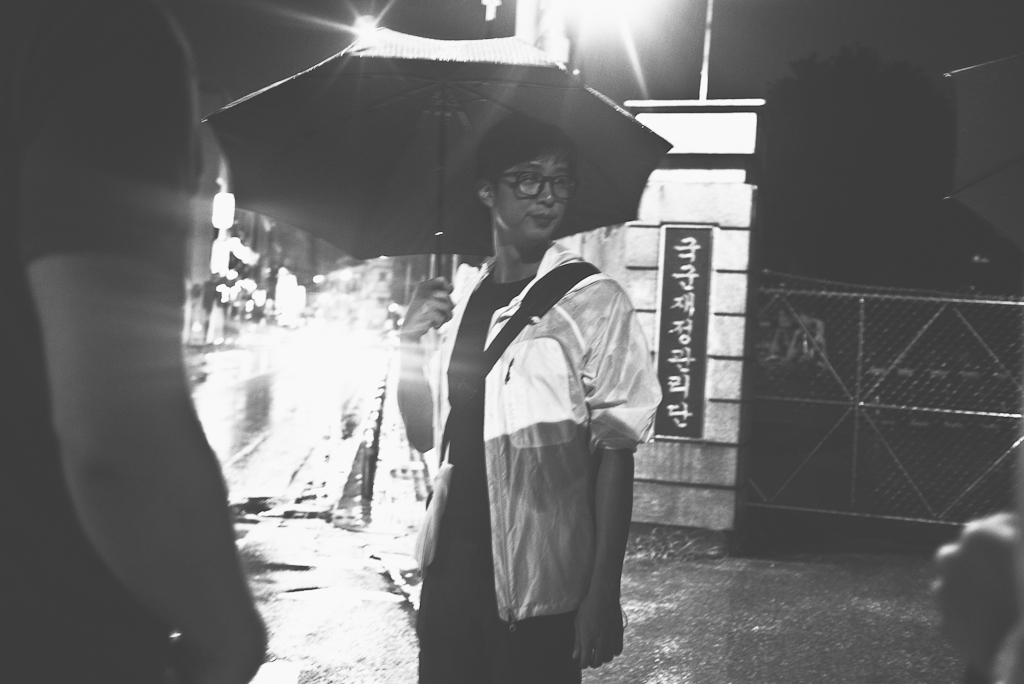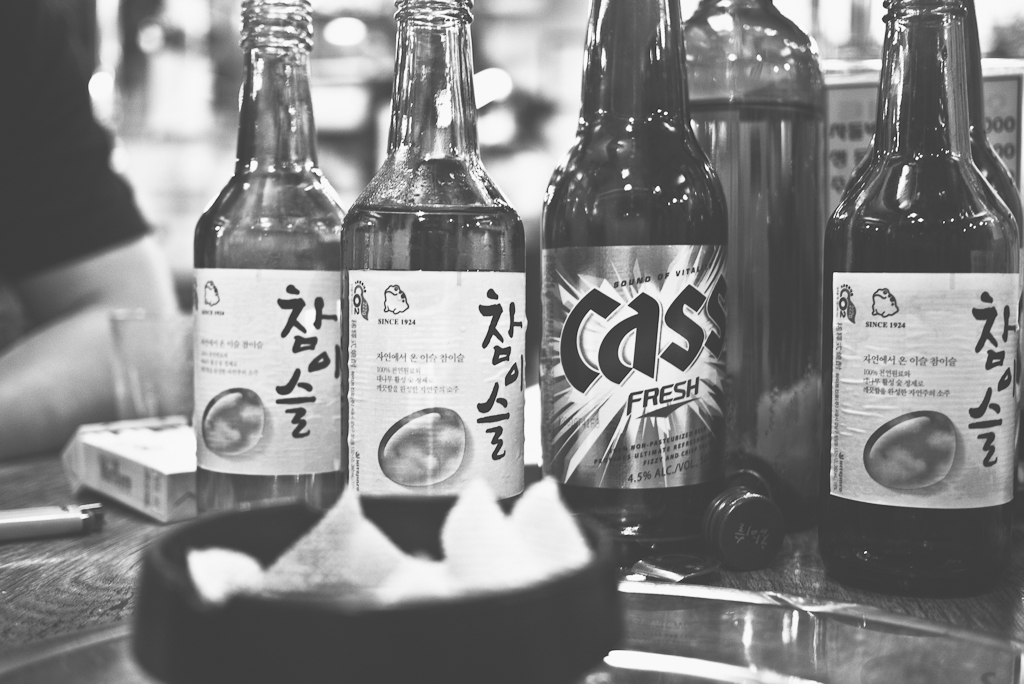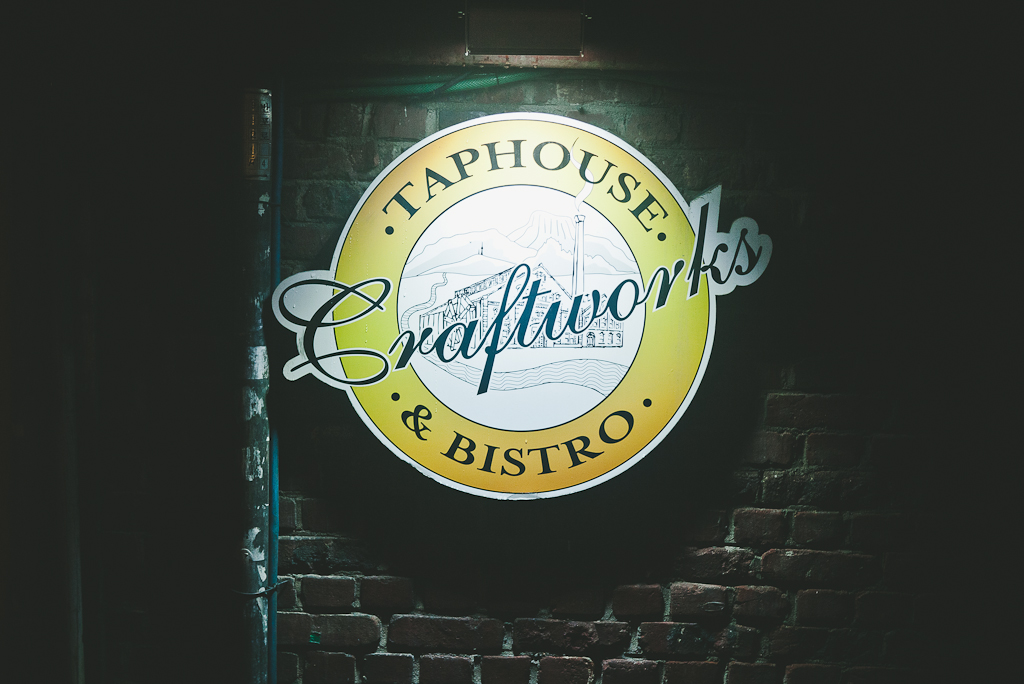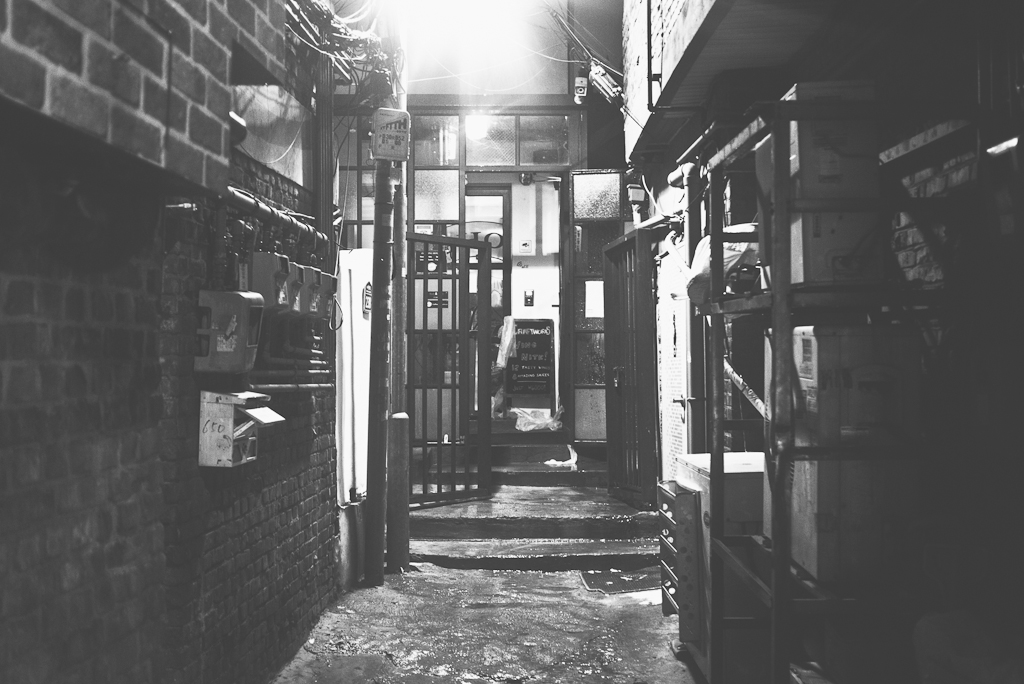This story originally appeared in Mash Tun journal, Issue No. 2, which released this October 5th, 2012, which you can purchase in the shop, here.
With a population of over 10 million, Seoul is the world's largest city proper (by geography). And astonishingly, over a quarter of South Korea's population lives in the city. That makes for some pretty unique finds, from the buzzing Gangham area to the narrow winding streets of Itaewon. All said, I saw the insides of two Korean barbecues, a craft brew pub, a stunning hotel and a side trip to the suburb of Suwon. So, roughly 1% of anything. But we made the most of it. In the middle on monsoon season.
With my glasses fogging up, even indoors, from the insane humidity levels, I enjoyed my first Hite in the motherland at the top of the Park Hyatt. Tacky sweetness, bronze colored and fizzy, Hite is comparable to most American adjuncts. But really, beer isn’t drank much this way, even in the motherland.
So, what does beer mean to Koreans then? Mostly, not much. Light, fizzy lagers are most common. Brands like Hite, Cass and Max are omnipresent and relatively the same. Max is slightly more astringent. Cass is a crisper light lager. Hite is more like High Life with a bit more malt backbone to it. But we’re splitting hairs here. At places frequented by tourists, you’ll also find Heineken and Guinness. And really, that’s it. That’s all of it.
But there’s a damn good reason for that. For Koreans, beer isn’t a beverage to be drunk on its own. It’s a cocktail base for soju. Soju is a national treasure — a distilled beverage similar to vodka, but with a slight hint of sweetness, an almost grain-build quality like a brown rice tea. Koreans drink this in shot form, but just as often mixed with the yellow fizz from a Hite or Max. Together, you get something like a crisp malt liquor. And as anyone knows, that’s dangerously easy to drink.
Our first mix was rather unsophisticated. After a 13-hour flight from Chicago to Seoul, we loaded up with Max and soju from a convenience store in the airport and hopped on the bus to the city. Knock back half a tallboy and replace it with the good stuff.
A series of korean barbecue joints also called for the cocktail. It happens to pair perfectly with grilled meat and pickled…things. And without a carbohydrate in sight, you can accidentally get something rolling. This stuff waits on your for about an hour and them bum-rushes you just when you think you’re safely in a cab and never lets go.
According to the locals, the brands of soju are always changing. Companies merge, sell off, and merge again. And no one seems to care about which soju they’re getting. Or beer for that matter. These are commodities and they serve their purpose well.
On my second and last rainy day, a french press got me off my soju shakes. And after a sojourn to Suwon, we reconvened for another barbecue and another night of soju bombs. This time, however, we set off across the river for the trendy and popular district of Itaewon.
Our crew grew ambitious, cruising through a dozen large bottles of Hite and half as many sojus. This time around, however, we had some local pros with us. Without the proper guidance, we had mixed our soju with a simple shot pout and a swirl like a bunch of punks. The proper way, as we learned by watching, is to pour the shot first, top off with beer, and then plunge a large soup soon into the glass with authority. The soju and beer mix in a beautiful fizzy eruption.
But this was just the start. This time, I had another destination in mind — Craftworks Taphouse in Itaewon.
The only craft beer pub in the world’s fourth largest city (by population), Craft Works is an incredible find. It’s tucked away behind street-facing storefronts through a short alley, and offers a small bistro dining room and an even smaller patio. The patio awning provided the bare minimum protection from the monsoons, and I started ordering for the table.
I took some pity on my Korean brethren and started with the Kolsch. Unaccustomed to anything over 4.5%, things could turn quickly without a healthy throttle. The Gwanaksan, named after a small mountain in souther Seoul, was a nicely balanced, light pilsner with a subtle hop aroma. It didn’t have any of the tart notes I typically expect from a kolsch, but it was a good brew for the 87 degrees and insane humidity we were swimming in.
For anyone not paying attention, the Moon Bear IPA got some notice. At 6.8% and 95 IBUs, this thing was a hop bomb of unparalleled scale for these guys. Strong florals and desert dryness on the palate kept us drinking far faster than advised at this point. Long-gone were the memories of soju sweetness.
My last drink in Seoul came in the form of the Geumgang Mountain dark ale, a nice nut-brown with a chocolate boozy finish. It was well balanced, well timed for putting me to bed.
As the plane ascended the following morning, and I turned away stewardess after stewardess offering small glasses of wine, I took one last look at the vastness and oddity of the Korean landscape. It was clear that for a country with so many mysteries and quirks, 48 hours isn’t much. But when given such a limited amount of time, initiating your palate, and your gut, is as good a first round as any.
 Michael Kiser
Michael Kiser
